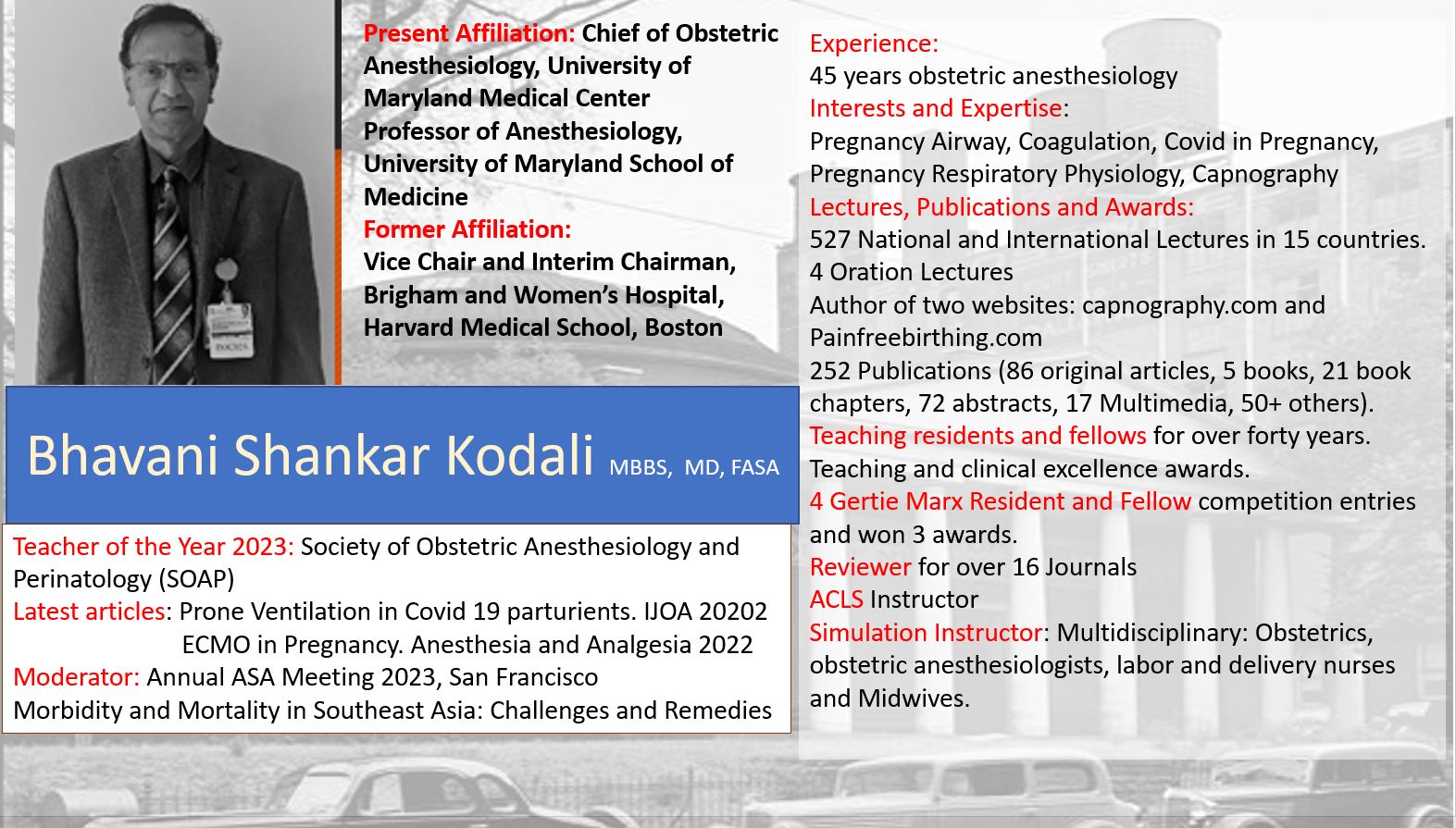Interpret your capnogram
Bhavani Shankar Kodali MD
This section provides a variety of capnograms put together in one group. Several E-mails have prompted us to compile this section. If you happen to see a capnogram and you wanted to know what the underlying cause is, this section should provide an answer. Match your capnogram against the following; the explanation is either self explanatory or’ click’ on the ‘detail’ to open a new window. Close the window to return to this page. Majority of these capnograms have bee discussed elsewhere in the website. If you do not see a matching capnogram, please E-mail us (capnoman@gmail.com) with your explanation or explanation referenced elsewhere for inclusion.
 Air-leak – Loose connection between sampling tube Details |
 Rebreathing capnogram of Mapleson D circuit. Details |
 Cardiogenic oscillations – Ripple effect – Seen during low-frequency ventilation. |
 Bronchospasm / COPD / Emphysema/ obstructed endotracheal tube -Slanting and prolonged phase 2 and increased slope of phase 3 (see 14) |
 Contamination of capnograph |
 Trend capnogram during cardiac arrest/resuscitation. |
 Upward slanting of phase 4. A normal variant in pregnant women during anesthesia. |
 Trend showing gradual elevation of baseline. |
 Curare cleft (see 10) |
 Resembling curare cleft due to an artifact created by a surgeon leaning on the chest or pushing against the diaphragm during expiration. |
 Dilution of expiratory gases by the forward flow of fresh gases during the later part of expiration when the expiratory flow rate decreases below the forward gas flow rate. |
 Elevation of baseline- A classic representation of rebreathing. Exhausted CO2 absorber |
 A gradual decrease in end-tidal carbon dioxide can occur during reduced metabolism, hypothermia, hyperventilation, small tidal volume ventilation due to inadequate alveolar sampling, and leaks in the sampling system, decrease in cardiac output see 13 |
 Occasionally, there can be a reverse phase 3 slope seen in patients with emphysema. Most like this may be due to destruction of alveolar capillary system in emphysematous lungs resulting in the delivery of carbon dioxide to expired gases. |
 Endobronchial intubation may not result in a characteristic waveform. However, occasionally, it may be like the one seen in COPD or the above. Read the 3 sections. Details see (15) |
 The CO2 waveform has two humps. Kyphoscoliosis resulted in a compression of the right lung. Differential lung emptying. Details |
 Esophageal intubation. |
 Esophageal intubation: Small CO2 spikes. Esophageal or gastric CO2 due to mask ventilation |
 Warming up CO2 analyzer is necessary before it begins recording CO2 waveforms. |
 The monitor will zero periodically. Will show CO2 numerical value with no waveform. |
 Ventilator IMV breath during spontaneous ventilation. |
 Sticking inspiratory valve – Inspiratory flip – Red indicates possible rebreathing |
 Air leak due to a broken connection between sampling tube and capnograph Details see (1) |
Lung transplant – Dual capnogram Details see 1, 15 and 23 |
 Increased CO2 due to hypoventilation, hypermetabolic states, and rebreathing. See 8, 39 |
 Capnogram during spontaneous ventilation in adults (see 27) |
 These capnograms can occur in children and neonates. Variations are normal and due to faster respiratory rates, smaller tidal volumes, and relatively longer response time of the capnographs. Recent technological advances such as micro-stream analyzers are reducing artifacts due to faster response time, producing normal-looking capnograms even in children and neonates. |
 |
 |
 |
 |
 Sampling problems such air or oxygen dilution during nasal or mask sampling of carbon dioxide in spontaneously breathing patients. |
 Slit sampling tube can result in a pigtail capnogram. A variation of 23 Details |
 A terminal upswing at the end of phase 3, known as phase 4, can occur in pregnant subjects, obese subjects and low compliance states. Details see also physiology section-phase 4. |

Expiratory valve malfunction can result in prolonged abnormal phase 2 and phase 0.Details |

Inspiratory valve malfunction predominantly results in abnormal phase 0. Details |

Esophageal intubation resulting few abnormal capnograms with relatively normal initial CO2 numerical values. Details |

Hyperventilation gradually results in the lowering of ETCO2 values. see 13 |

Hypoventilation gradually increases CO2 values with a normal baseline. see 8 and 25 |

Rebreathing produces gradual elevation of baseline and ETCO2 values. See 8 |

Carbonated beverages in the stomach can result in abnormal capnograms with progressively decreasing CO2 values following esophageal intubation. See other variations 17, 18, 37 |

Unrecognized exhaustion of CO2 absorber resulted in substantial rebreathing and rising ETCO2 values. The closed circuit without a functioning absorber mimicked the Mapleson D circuit. Details |

Contamination of the capnometer results in the sudden elevation of baseline as well as ETCO2 values. See 5 |

 Twitter
Twitter Youtube
Youtube










